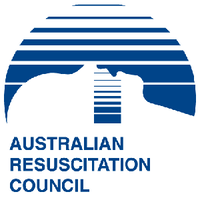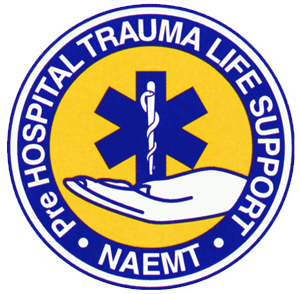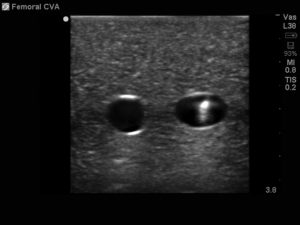Overview
Hey everyone!
Welcome back to another article. This week I’m sharing 5 professional courses that can help you manage a medical emergency as a junior doctor.
Introduction
Course #1 – Basic Life Support (BLS)
Course #2 – Advanced Life Support (ALS)
Course #3 – Pre Hospital Trauma Life Support (PHTLS)
Course #4 – Basic Assessment and Support in Intensive Care (BASIC)
Course #5 – Ultrasound Guided Cannulation
Final Thoughts
Introduction
As a junior doctor, you are often the first medical professional to arrive to an emergency. Whether it is on the wards or in the middle of the shopping centre or on an airplane (when we are allowed back in them of course), medical emergencies can occur anywhere and at any time.
As a junior doctor, it can be very daunting to manage emergencies, especially with our limited clinical experience and acumen.
When it comes to upskilling in our emergency management, it can be hard to know where to begin. There is a smorgasbord of courses to choose from, each with their own cost and time commitments and it can be hard to know which ones to choose.
So, I’ve compiled a list of 5 amazing courses that every junior doctor should do to help them when they find themselves in a dreaded emergency situation. These courses will equip you with different skills to manage emergencies in different situations (everywhere from the side of a road to a hospital intensive care unit) and give you a framework for approaching these situations.
For each course, I’ve included details about the learning points as well as practical things like duration and cost to help you prioritise the course/s that will benefit you the most. Full disclosure, I have personally completed (and passed) each and everyone of these courses. So rest assured, you can do it too.
Course #1 – Basic Life Support (BLS)

- The aim of the Basic Life Support (BLS) course is to support an unconscious patient’s circulation and respiration using cardiopulmonary resuscitation (CPR) until advanced life support arrives.
- Common components of this course include learning the Chain of Survival and understanding the BLS algorithm in adults and children and when to implement it.
- There is often a theoretical component to this course (done as pre-reading, online modules) prior to the course followed by a multiple choice quiz.
- The face-to-face session includes a practical demonstrated of CPR on a mannequin and then an assessment of your BLS skills.
- You will receive a certificate detailing your completion of the course, which is usually valid for 12 months.
- Most hospitals and clinics require clinicians to have an up to date BLS certificate.
- If completed through the hospital or health service you are employed at, the course is usually free
- If completed through an external provider, the course can range from AUD $50 to $100.
- The course usually takes 4 hours or half a day
- If you are doing a refresher course, this is often shorter.
- Your local hospital or health service
- Designated centres as determined by an external provider e.g. The Australian Red Cross
- St John Ambulance in Queensland also has multiple courses available
- Conferences or courses run by the RACGP
Course #2 – Advanced Life Support (ALS)

- Advanced life support (ALS) involves the management of a deteriorating patient and/or cardiac arrest beyond the scope of basic life support.
- ALS is subdivided into ALS1 and ALS2
- The ALS1 course is designed for clinicians with infrequent exposure to emergency situations such as general practitioners, ward nurses or paramedics. ALS1 focuses on the foundation and core skills required to manage a deteriorating patient.
- The ALS2 course has been designed for clinicians who work in critical care areas or who may be responsible for the management of a deteriorating patient or cardiac arrest patient. This includes ED or ICU nurses or doctors, critical care paramedics and emergency team leaders. ALS2 focusses on developing a higher level of skills and knowledge compared to the ALS1 course.
- NOTE: The ALS1 course is not a prerequisite for completing the ALS2 course.
- ALS 1: AUD $600
- ALS2: AUD $1600
- ALS1: 1 day course (8am to 5pm)
- ALS2: 2 day course (8am to 6pm)
- The Australian Resuscitation Council (ARC) is the peak body for administering the ALS courses around Australia.
Course #3 – Pre Hospital Trauma Life Support (PHTLS)

- The purpose of this course is to develop knowledge and skills in recognising and managing trauma patients in the pre hospital care setting.
- The course is designed for multidisciplinary emergency health care professionals such as paramedics, nurses and medical officers
- The course involves a mixture of lectures, hands-on skills stations and simulated trauma scenarios.
- The cost of the course covers the two day workshop, the Prehospital Trauma Life Support Textbook
- Upon successful completion of the course you will be awarded PHTLS certification (valid for 4 years) by the National Association of Emergency Medical Technicians (NAEMT).
- The course is also fully catered #bonus
$150 – $250
2 x 8 hour days (16 hours in total)
- Courses are advertised on the PHTLS Website
- The courses are held in all major capital cities (e.g Sydney, Melbourne, Brisbane, Canberra)
- They also visit regional areas and advertise at the hospital and health service
Course #4 – Basic Assessment and Support in Intensive Care (BASIC)

BASIC is a short 2-day course which covers the essential and fundamental aspects of intensive care.
Topics included are:
- airway management
- acute respiratory failure
- mechanical ventilation
- basics
- common modes
- settings
- troubleshooting
- specific conditions
- haemodynamic monitoring
- management of shock
- severe sepsis
- interpretation of arterial blood gases
- transport of critically ill patients
- severe trauma
- neurological emergencies
- oliguria & acute renal failure
- cardiopulmonary resuscitation
- arrhythmias
- nutrition
- sedation and analgesia
- venous thromboembolic disease
- stress ulceration
- cardiovascular and respiratory physiology
- metabolic & electrolyte disturbances
The course has been run in over 50 countries and well-recognised.
AUD $500 – 600
2 day course (8am – 5pm)
- Run Australia-wide and worldwide
- Check out the BASIC Website to find out about your nearest course
Course #5 – Ultrasound Guided Cannulation

- Ultrasound guided cannulation workshops focus on improving cannulation skills using a portable ultrasound probe.
- Ultrasound cannulation is SUCH A USEFUL SKILL. I used it everyday when I worked in my after hours/ward call rotation.
- The purpose of ultrasound cannulation is to use the ultrasound probe to assist practitioners in inserting peripheral intravenous cannulas into patient’s arms/legs.
- This is especially useful when patients have difficult access for example inpatients in renal medicine, vascular surgery or oncology.
- Ultrasound guided cannulation courses usually involve a theoretical component and a practical component
- The theoretical component involves understanding the principles behind the ultrasound probe and how to get the best view of the vein/artery.
- The practical component involves practicing the skill of inserting a cannula under ultrasound guidance.
- I cannot recommend this course highly enough! It had the most value-add in my day to day job as a junior doctor.
- There is a large variation in cost from free to AUD $750
- Personally, the course I completed was FREE and provided by the hospital and health service I worked in. It was taught my an Emergency Medicine physician who was trained in ultrasound guided cannulation.
- The course usually takes 3-4 hours
- If you can, I would recommend searching for opportunities in your local hospital or health service, as these are likely to be the most accessible and affordable. Other external providers include:
- QLD – Clinical Skills Development Service
- VIC – University of Melbourne
- SA – Learn EM
- NSW – St Vincent’s Hospital
If you’d like to learn more about US guided cannulation for FREE online, check out this great written resource.
Final Thoughts
As a junior doctor, we are often too busy on the wards or at work to spend time studying or improving our skills. Professional courses are some of the most effective and efficient ways to improve your skills and apply them in your day-to-day practice. Best of all, you can often claim Professional Development Leave for them. I hope you’ve found these 5 course recommendations useful in improving your emergency management skills.
Share this post!









